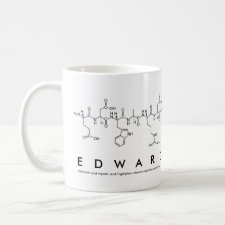
Authors: Yu JCC, Lai EPC
Article Title: Determination of ochratoxin A in red wines by multiple pulsed elutions from molecularly imprinted polypyrrole.
Publication date: 2007
Journal: Food Chemistry
Volume: 105
Issue: (1)
Page numbers: 301-310.
DOI: 10.1016/j.foodchem.2006.11.049
Alternative URL: http://www.sciencedirect.com/science/article/B6T6R-4MT59F9-1/2/1828f40275ac7ff5346b8495ec4cf517
Abstract: Carbon nanotubes (CNTs) were used successfully to enhance the binding capacity of a molecularly imprinted polypyrrole (MIPPy)-modified stainless steel frit for micro-solid phase extraction (μSPE). Low back pressure of this new MIPPy/CNTs-modified stainless steel frit device made it feasible for sample preconcentration by using a syringe pump. For a 3-mL sample of red wine, preconcentration of ochratoxin A (OTA) was achieved within 6 min at a flow rate of 0.5 mL/min. In order to eliminate matrix interferences, two new approaches based on differential or multiple pulsed elution (PE) were developed for the determination of OTA in French (1999), Canadian (2003) and Bulgarian (2004) red wines. Elution of OTA from MIPPy/CNTs, for on-line coupling to high performance liquid chromatography (HPLC) analysis with fluorescence detection (FLD), was achieved by an ion-pairing mechanism. It was found that the % triethylamine (TEA) in the PE solution had a scalable effect on the OTA retention time, as influenced by the formation of three different ion-pairs: [NH4+-OTA2--NH4+], [NH4+-OTA2--TEA+], and [TEA+-OTA2--TEA+]. Preliminary method validation showed that the Bulgarian red wine was best analyzed by MIPPy/CNTs-μSPP-PE-HPLC-FLD using 2% TEA. The reproducibility was 8.9% RSD and the limit of detection was 0.08 ppb (S/N = 3), which is more than adequate for handling the regulatory level of 2 ppb
Template and target information: ochratoxin A
Author keywords: molecularly imprinted polypyrrole, carbon nanotubes, Stainless steel frit, Micro-solid phase extraction, ochratoxin A, Multiple pulsed elutions



Join the Society for Molecular Imprinting

New items RSS feed
Sign-up for e-mail updates:
Choose between receiving an occasional newsletter or more frequent e-mail alerts.
Click here to go to the sign-up page.
Is your name elemental or peptidic? Enter your name and find out by clicking either of the buttons below!
Other products you may like:
 MIPdatabase
MIPdatabase









